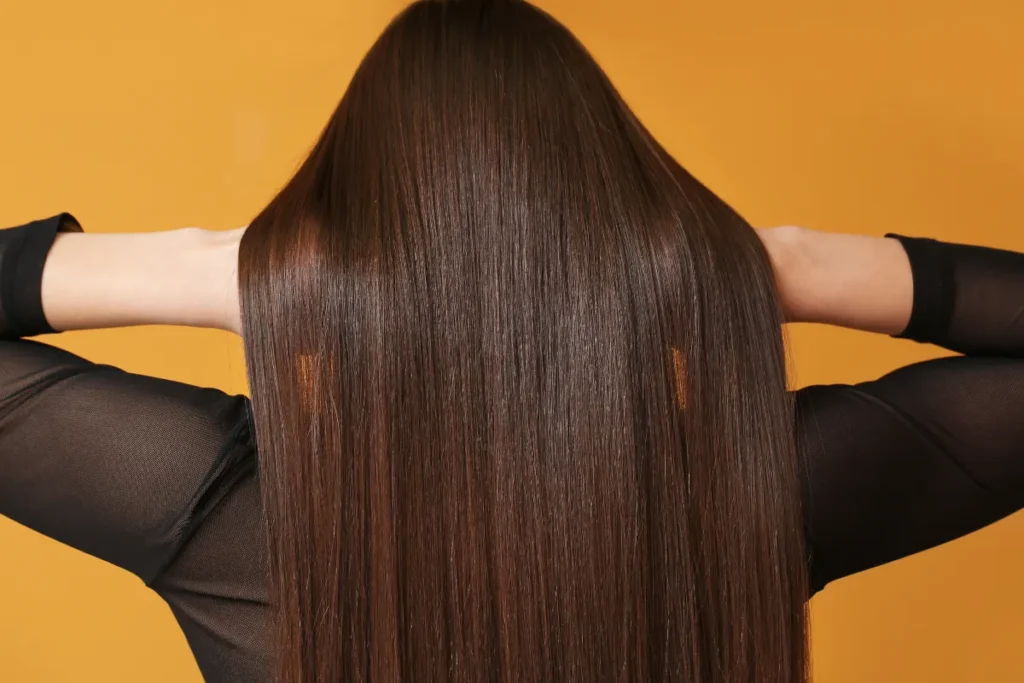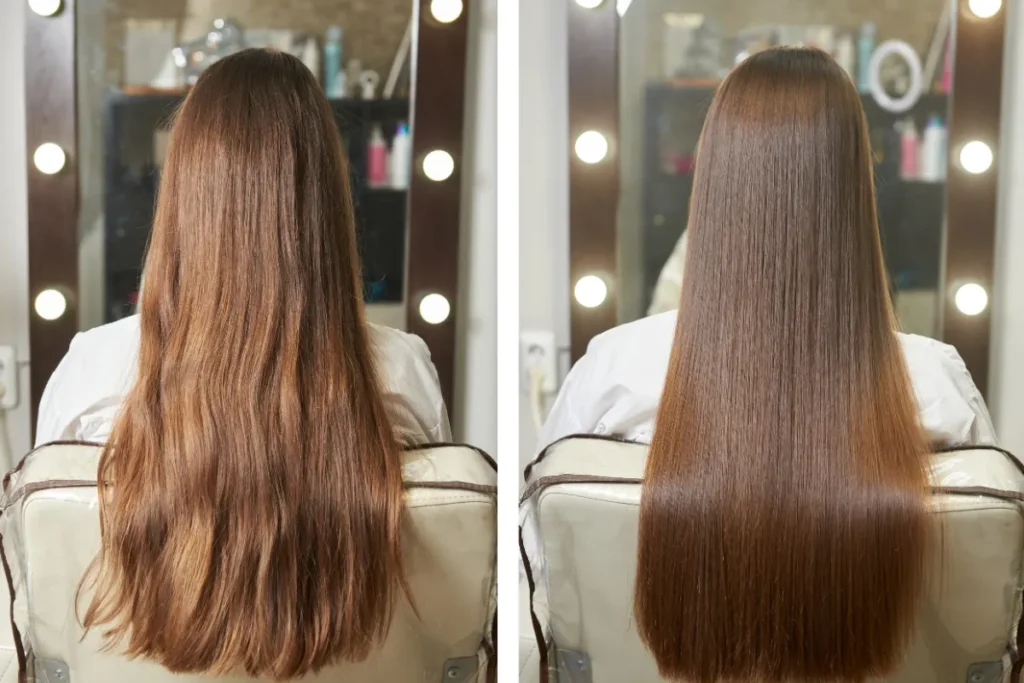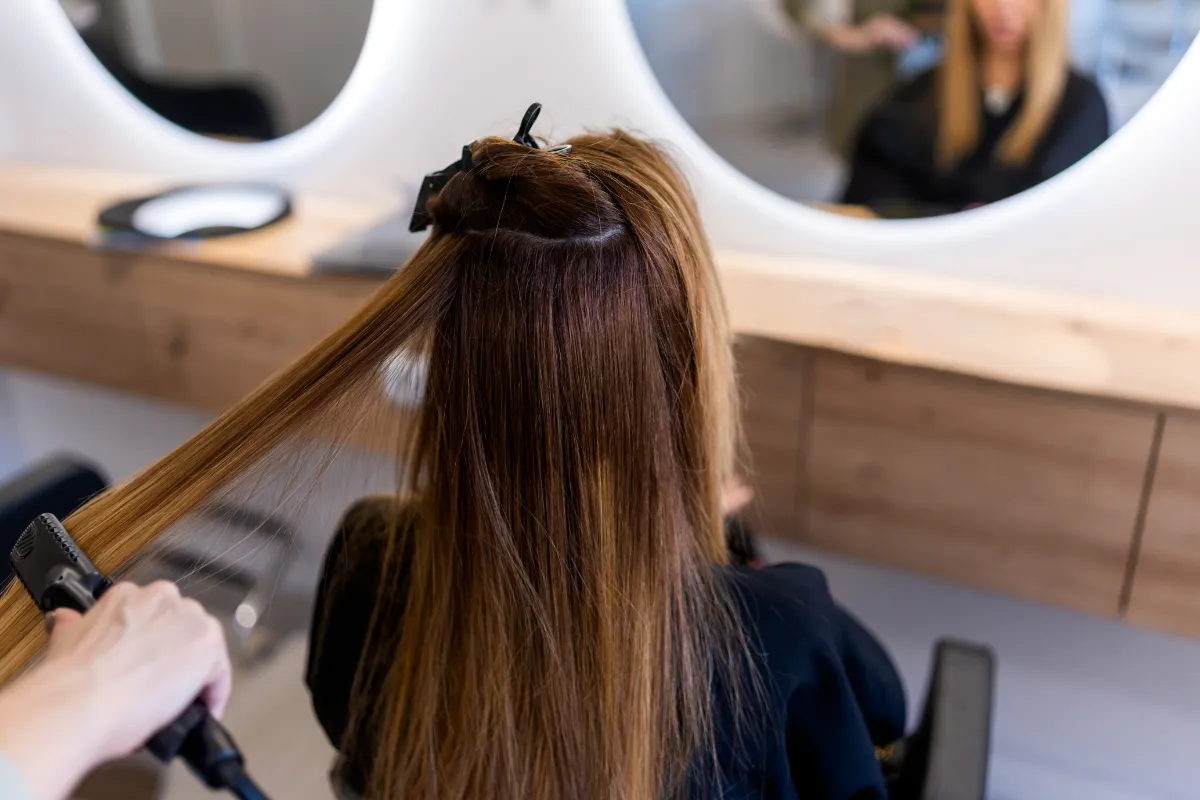In the quest for smooth, manageable hair, individuals often turn to professional treatments to tame frizz, reduce volume, and achieve a sleek, polished look.
Two popular options in the realm of hair smoothing treatments are keratin treatments and smoothing treatments.
While both aim to improve the texture and appearance of the hair, they utilize different ingredients and techniques to achieve their desired results.
In this comprehensive guide, we will delve into the intricacies of keratin treatments and smoothing treatments, exploring their differences in formulation, process, longevity, and efficacy, to help you make an informed decision about which treatment is best suited to your hair needs.
Understanding Keratin Treatments:

Keratin treatments, also known as Brazilian blowouts or keratin smoothing treatments, are salon procedures designed to straighten and smooth the hair by infusing the hair shaft with keratin, a protein naturally found in the hair, skin, and nails.
The process typically involves the following steps:
- Cleansing: The hair is washed with a clarifying shampoo to remove any buildup and impurities from the hair and scalp.
- Application: A keratin solution containing a high concentration of keratin protein is applied to small sections of the hair using a brush or applicator.
- Heat Treatment: The hair is then blow-dried and flat-ironed to seal the keratin into the hair cuticle and create a smooth, straight finish.
- Rinse and Style: The hair is rinsed and styled as desired, resulting in soft, shiny, frizz-free hair that is more manageable and resistant to humidity.
Understanding Smoothing Treatments:

Smoothing treatments, also known as hair smoothing or anti-frizz treatments, are salon procedures designed to relax the hair’s natural texture and reduce frizz and volume.
Unlike keratin treatments, which primarily focus on infusing the hair with keratin protein, smoothing treatments utilize different formulations and techniques to achieve smoother, more manageable hair.
The process typically involves the following steps:
Cleansing:
The hair is washed with a clarifying shampoo to remove any buildup and impurities from the hair and scalp.
Application:
A smoothing solution containing ingredients such as amino acids, proteins, silicones, or other smoothing agents is applied to the hair in sections using a brush or applicator.
Heat Treatment:
The hair is then blow-dried and flat-ironed to activate the smoothing ingredients and seal them into the hair cuticle.
Rinse and Style:
The hair is rinsed and styled as desired, resulting in smoother, more manageable hair with reduced frizz and volume.
Differences Between Keratin and Smoothing Treatments:
Ingredients:
The primary difference between keratin treatments and smoothing treatments lies in their formulation.
Keratin treatments focus on infusing the hair with keratin protein, while smoothing treatments utilize a variety of ingredients such as amino acids, proteins, and silicones to relax the hair’s natural texture and reduce frizz.
Results:
While both treatments aim to smooth the hair and reduce frizz, keratin treatments tend to provide more dramatic results, resulting in straighter, sleeker hair with enhanced shine and manageability.
Smoothing treatments, on the other hand, offer a more subtle smoothing effect, leaving the hair softer, smoother, and more manageable without completely straightening it.
Longevity:
Keratin treatments typically last longer than smoothing treatments, with results lasting anywhere from 2 to 6 months depending on the hair’s texture, thickness, and porosity.
Smoothing treatments, on the other hand, may need to be repeated more frequently, with results lasting anywhere from 4 to 12 weeks.
Hair Type:
Keratin treatments are suitable for all hair types, including curly, wavy, and straight hair, although they may be particularly beneficial for individuals with frizzy, unruly hair.
Smoothing treatments are also suitable for all hair types but may be better suited to individuals with moderately frizzy or unmanageable hair who are looking for a softer, more natural-looking result.
Formaldehyde Content:
Some keratin treatments contain formaldehyde or formaldehyde-releasing agents, which are used to cross-link the keratin protein and create a more permanent bond with the hair.
While formaldehyde helps to achieve longer-lasting results, it can be irritating to the scalp and respiratory system and may release harmful fumes during the treatment process.
Smoothing treatments, on the other hand, are typically formaldehyde-free or contain lower levels of formaldehyde, making them a safer option for individuals with sensitivities or concerns about chemical exposure.
Conclusion:
Keratin treatments and smoothing treatments are popular salon procedures designed to smooth the hair, reduce frizz, and enhance manageability.
While both treatments offer similar benefits, they utilize different ingredients and techniques to achieve their desired results.
Keratin treatments focus on infusing the hair with keratin protein for straighter, sleeker hair, while smoothing treatments utilize various ingredients to relax the hair’s natural texture and reduce frizz.
When choosing between the two treatments, consider factors such as your hair type, desired results, and concerns about formaldehyde exposure to determine which option is best suited to your needs.
Regardless of which treatment you choose, consult with a professional stylist to ensure safe and effective results and enjoy smoother, more manageable hair that looks and feels its best.
